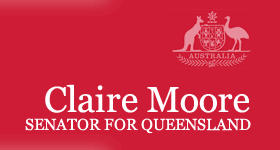Senator MOORE (Queensland) (7:40 PM)
As we move closer this week to World Tuberculosis Day, I want to speak again in this place about the scourge of this disease across the world. We know that tuberculosis is a contagious disease. Indeed, tuberculosis is one of the most infectious diseases on the planet. When infectious people sneeze or cough or talk or spit, they actually spread TB germs known as bacilli into the air. We have talked before in this place about how widespread this can be and how easily people can become infected. Left untreated, each person with active TB disease can in fact infect on average between 10 and 15 people a year. That indicates just how quickly this spreads and how people living in communities that live close together, perhaps in poverty, are most vulnerable to becoming extraordinarily ill. One of the things about TB is that many people can have the disease for a long time and not know that they are infected. The disease stays with them if it is untreated and at any time can come forward.
We know that when someone's immune system is weakened the chances of becoming sick from TB are greater. This has been identified across the world and, in particular, that the disease is a scourge of people who are in poverty. Someone in the world is newly infected with TB bacilli every second. Overall, one third of the world's population is currently infected with the TB virus and five to 10 per cent of people who are infected with the TB bacilli but who are not infected with HIV become sick or infectious at some time during their life. We do know, and this is something that has been pointed out consistently by the World Health Organisation, that people with HIV and TB infection are much more likely to develop full-blown TB. The World Health Organisation estimates that the largest number of new TB cases in 2005 occurred in the South-East Asia region, which accounted for 34 per cent of incident cases globally. However, we also know that the estimated incidence rate in sub-Saharan Africa is nearly twice that of the South-East Asian region, at nearly 350 cases per 100,000 population.
TB can be fatal. TB can be cured. The easiest way for TB to be treated is by having early immunisation. Certainly one of the things that we talk about on our globe is our international response to ensure that children are immunised early. That is something that is done in most countries and it is certainly something that Australia achieves but the real demand upon all of us is to look at what is happening in our own region, South-East Asia, and also in sub-Saharan Africa. There is an urgent need for appropriate drug treatment to be available to people who live in these areas. We know that in 2005 the estimated per capita TB incidence was stable or falling in all six WHO regions. However, this slow decline, and it is very slow, is offset by a very large population growth. Consequently, the number of new cases arising each year is still increasing globally. This is particularly so in the WHO regions of Africa, the Eastern Mediterranean and South-East Asia.
In 2006 WHO launched the Stop TB Strategy. The core of this strategy is DOTS, which is the TB control approach launched by WHO in 1995. Since its launch, more than 22 million patients have been treated under the DOTS based system. The new six-point strategy builds on this success while recognising the key challenges of TB/HIV co-morbidity and also the development of drug-resistant TB, which is becoming more persistent in some parts of the globe. Not only do we have the existing strains, which medical research has proved can be treated, but strains are now developing that seek greater research and demand consideration of a new eradication system.
The six components of the Stop TB Strategy are quite simple and straightforward: (1) pursuing high-quality DOTS expansion and enhancement, making high-quality services widely available and accessible to those who need them, including the poorest and most vulnerable; (2) addressing TB/HIV and other challenges and making sure that there is greater action and input, which is particularly important when we see that under the UN Millennium Development Goal 6, target 8, we are looking particularly at ensuring that we reduce the targets of TB by 2015, which is so close to us now; (3) contributing to health system strengthening, which means we have to look at strategies to help individual governments have stronger health systems and supply systems of innovative service delivery across the regions; (4) engaging all care providers so that TB patients seek care from a wide range of public, private, corporate and voluntary healthcare providers. We need to reach all patients particularly those who live in far reaching areas and, as we continually state, in poverty. Goal (5) is the core goal in so many of the WHO projects. It is empowering people with TB and their communities because community TB care projects have shown how people and communities can undertake essential TB control tasks. The networks created can mobilise civil societies and ensure genuine political support and the long-term sustainability for TB control programs at all levels; And goal (6) is another one we hear about so often: ensuring that there is enabling and promoting research because there must be continuing research to find better drug treatments and also to treat the drug-resistant strains of the disease that are coming forward.
The strategy is to be implemented over the next 10 years and is described in the Global Plan to Stop TB. The global plan is a comprehensive assessment of the action and resources needed to implement the Stop TB Strategy and to achieve the following targets: we have to, under the Millennium Development Goal (MDG) 6, target 8, halt and begin to reverse the incidence of TB by 2015. There are clear targets linked to the MDGs and endorsed by the partnership: by 2015, reduce TB prevalence and death rates by 50 per cent and by 2050 the goal-and the goal we must all share-is to eliminate TB as a public health problem.
Certainly one of the key ways that funding has been achieved for TB research and eradication has been through the Global Fund. The Global Fund is the unique private-public partnership dedicated to attracting and dispersing additional resources to prevent and treat HIV-AIDS, tuberculosis and malaria, which are the three major diseases on the march and killing people across our world. This partnership between government, civil society, the private sector and affected communities represents a new-it was awarded and celebrated at the time-and innovative approach to international health financing.
The Global Fund works in close collaboration with other bilateral and multilateral organisations to supplement the existing ways of working on these three diseases. Since 2002-when the Global Fund was created-it has become the main source of finance for programs to fight these diseases with approved funding of US$19.3 billion for more than 572 programs in 144 countries. The Global Fund alone provides a quarter of all international financing for AIDS globally, two-thirds of that for tuberculosis and three-quarters for malaria.
The Global Fund is financing and enabling countries to strengthen health systems and to make improvements to infrastructure and providing training to those who deliver services. We were lucky enough a couple of weeks ago in this place to have the current head of the Global Fund visiting and talking with many of us about the need to continue the work that the fund does and also to maintain its strong governance model to ensure that people are not just handed money. They have to prove they are working effectively to address the goals that they have determined.
The Australian government has been a strong contributor to the Global Fund. Our government has made that commitment. We are seeking greater commitment into the future because further money always needs to be put into this battle of which we are all a part.
Again, I think it is very important that we acknowledge that this disease of tuberculosis is not a part of history. In the Western world we think of it as something of a disease that belonged to the 19th and early 20th centuries. It is very real in our neighbours. We need to continue to be part of the fight against it.
Tuesday, 16 March 2010




